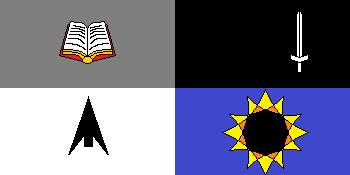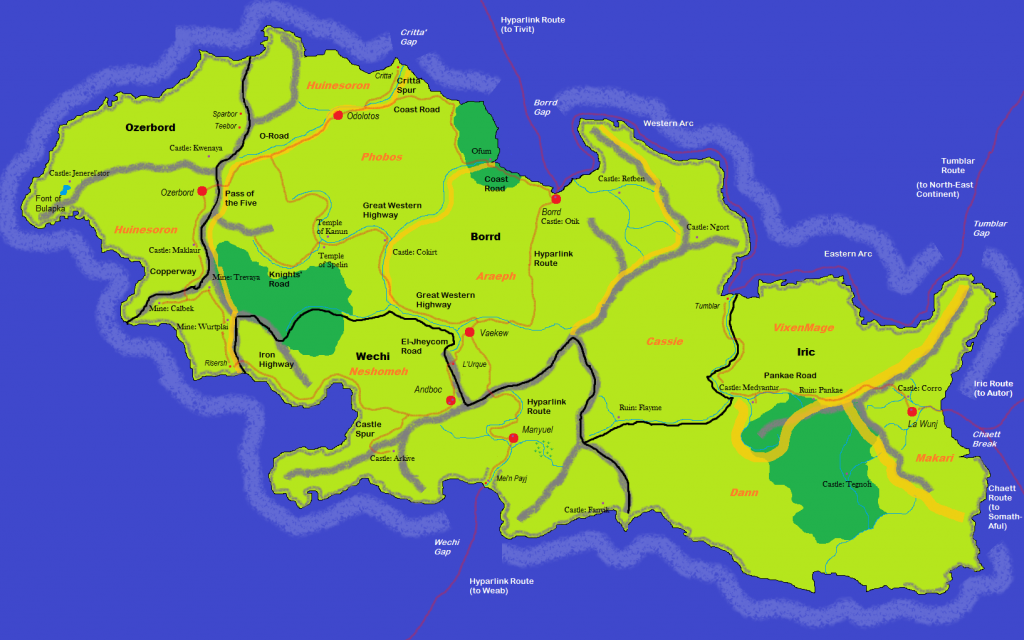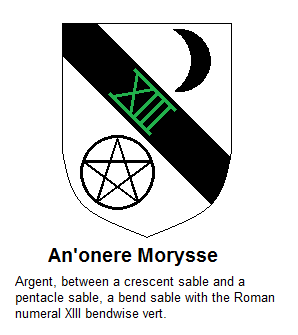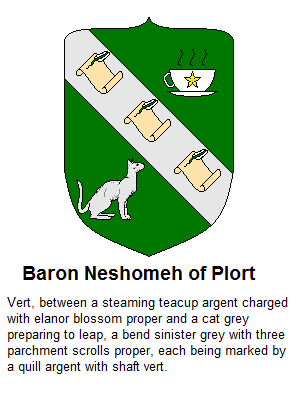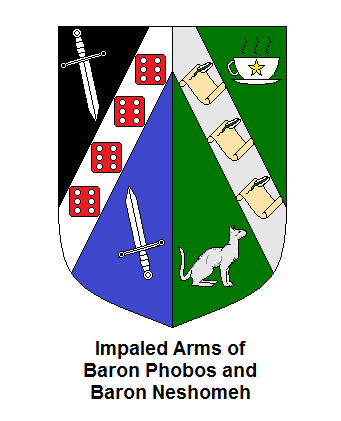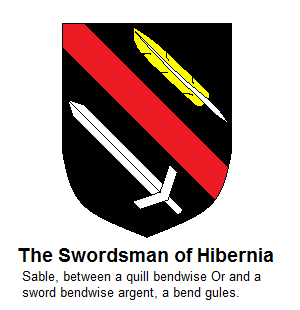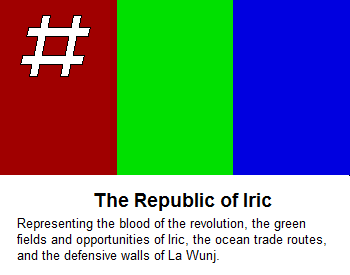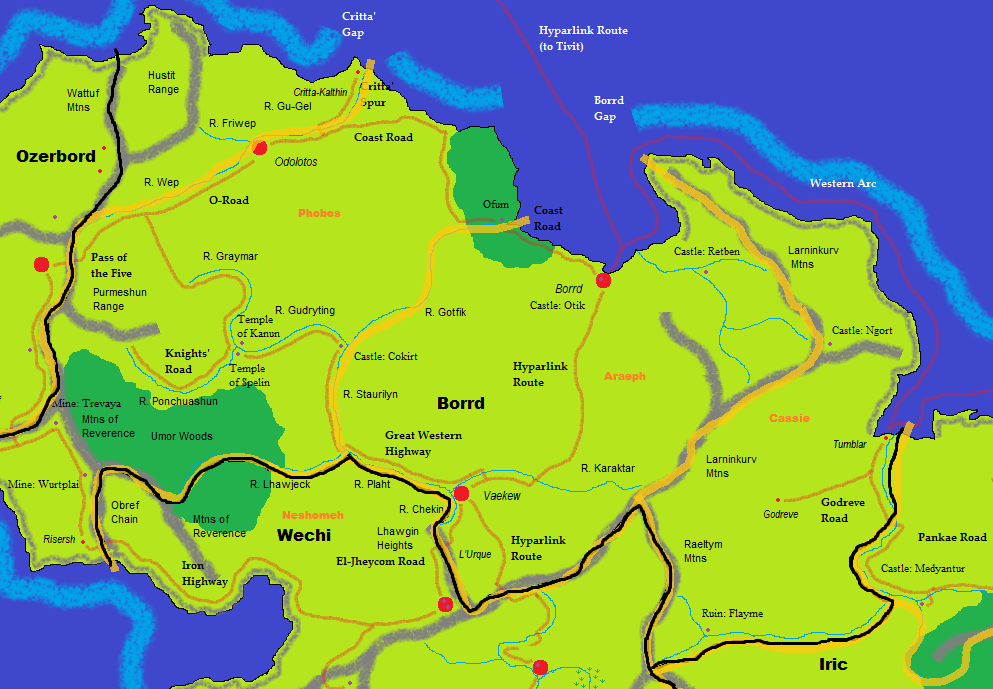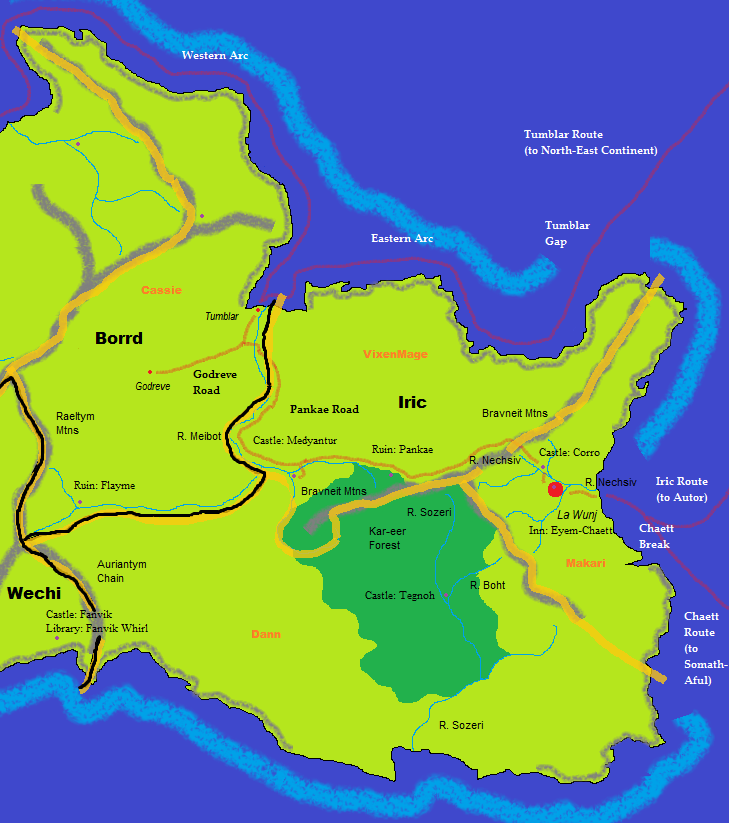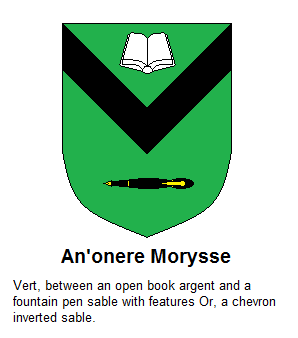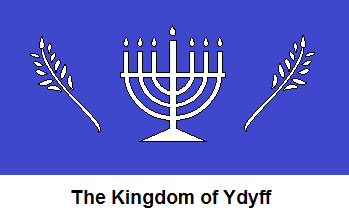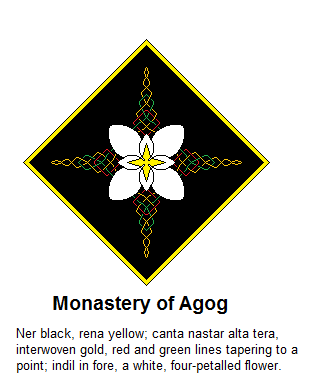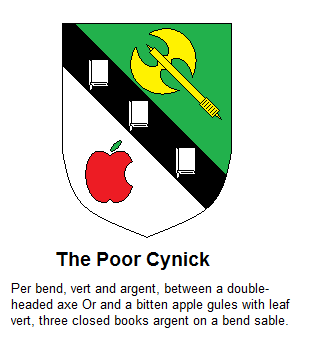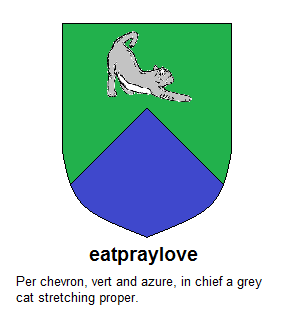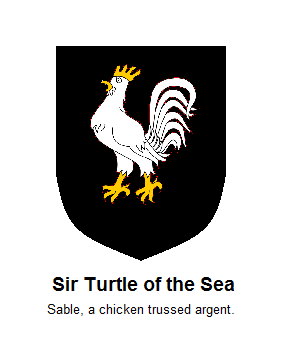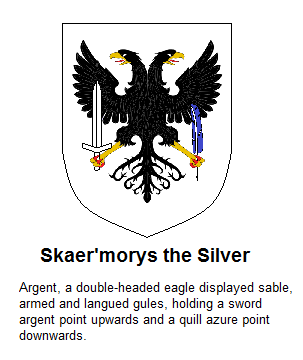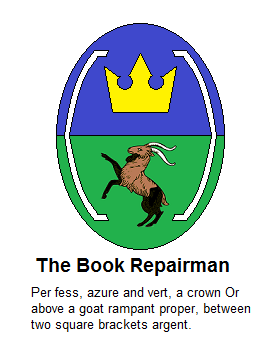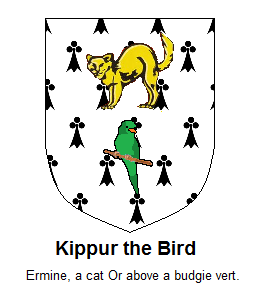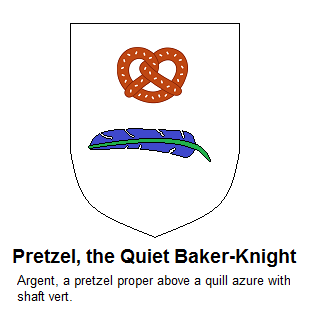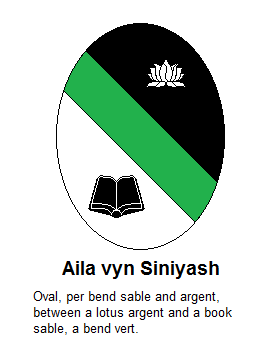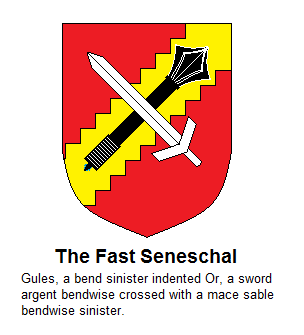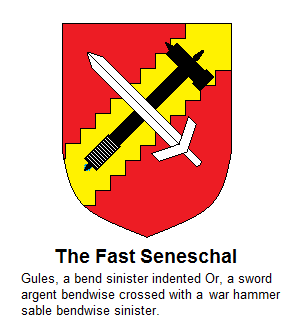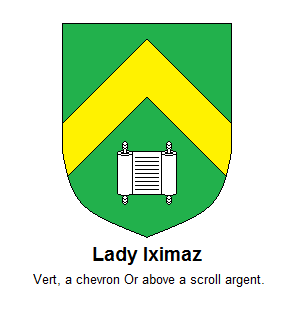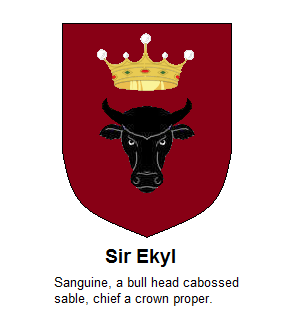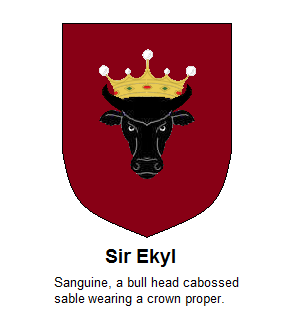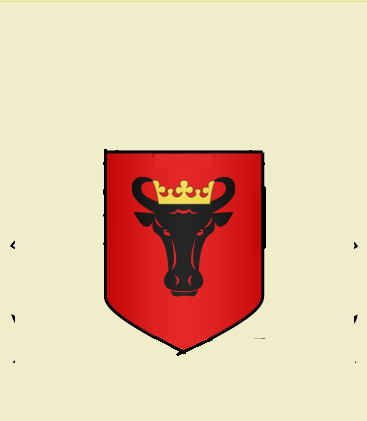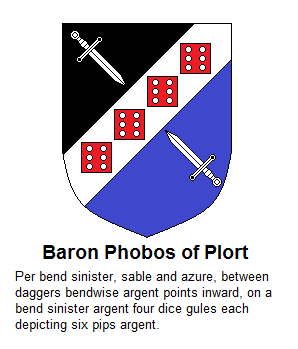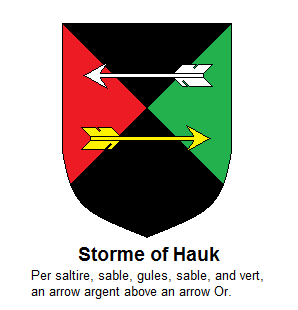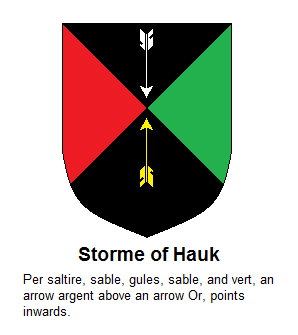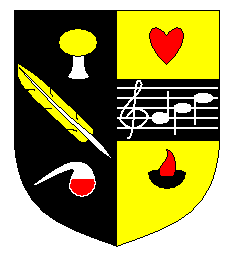Subject: The etiquette of heraldry.
Author:
Posted on: 2014-08-29 09:18:00 UTC
Or: Oh, Sorry, I Didn't Know It Was You When I Shot You.
The thing to remember about heraldry is that it was originally a battlefield safety mechanism. Much like, say, football players wearing their team colours, your shield identified you - either personally, or as part of a group. In Scotland, the same thing was accomplished using the various tartans - you stab the guys who aren't wearing the same one as you.
So if you're hoping to be identified in half a second by some guy swinging a sword at you, you don't want an insanely complex device. Originally, I believe the only charges were the ordinaries - the basic geometric shapes like the chevron or the cross, covering the whole shield. 'Hey, red cross on a white shield - better not stab him, that's George!' Nice and simple.
But more and more knights started using shields, and as an infamous 14th century case shows, the simple arrangements began to be repeated. Uh-oh! What if you were fighting alongside George, but against Henry - and both used the shield Argent, a cross gules? You wouldn't know who to stab! And so - or in some similar manner - began the use of charges - animals, symbols, and other devices to further differentiate the shields.
And then heraldry moved away from the battlefield and into the realms of hereditary pride, and it got a bit ridiculous. Nesh has already pointed at the 719-fold quartering of the Stowe Armorial. That would be worse than useless on the field! But it neatly lays out all the families represented, and so serves its purpose.
So how complex should a device be? Wikipedian examples show that they tend to be fairly simple. A single charge is common, or occasionally identical charges either side of an ordinary. The fact that they are then often quartered makes them look more complex - but only in the same way that a dozen Mary-Sues make a story look better written than just one, by sheer quantity. Each individual device remains quite simple.
It's different, of course, for Elvish heraldry. Elvish visual acuity was ludicrously sharp, and if you can detect the motion of Mars against the starfield in under ten minutes, you're not going to have much trouble making out a complex pattern. Add to that the fact that the Enemy didn't really use heraldry - Morgoth's shield would simply be blazoned Sable in English - and you're fairly safe designing your devices to look nice, far more so than in English heraldry.
So what about in Plort? Well - they use Elvish devices, which implies they can make them out. It may be that the Marizu don't use heraldry at all (or have an irrepressible urge to make everything urple), and thus it doesn't really matter that much. Add in the fact that most war parties are only one or two knights, and that the devices are assuredly used for decoration, and you find the situation we've got - heraldry designed more to be eye-pleasing (and punny), rather than strictly distinguishable.
hS
